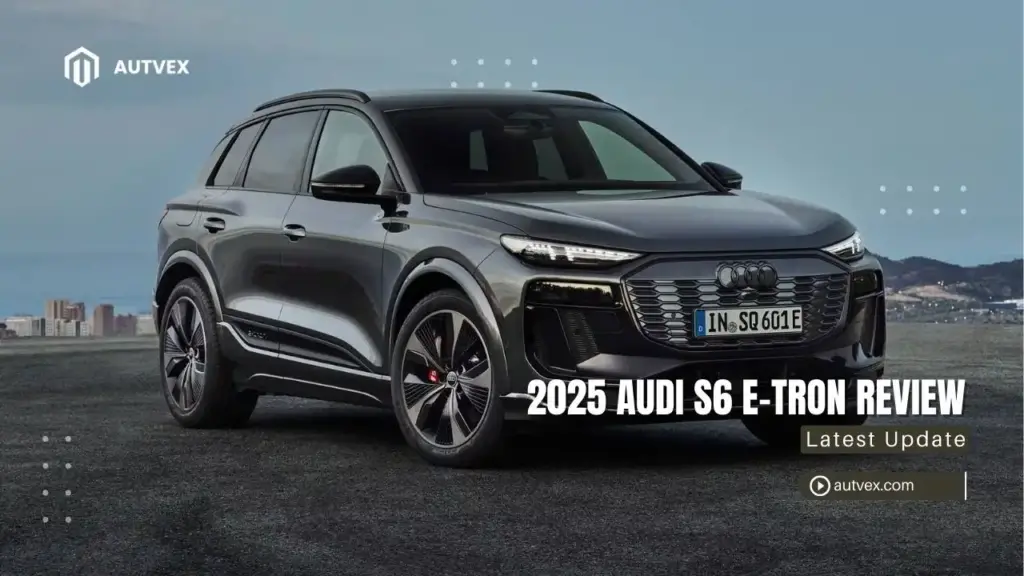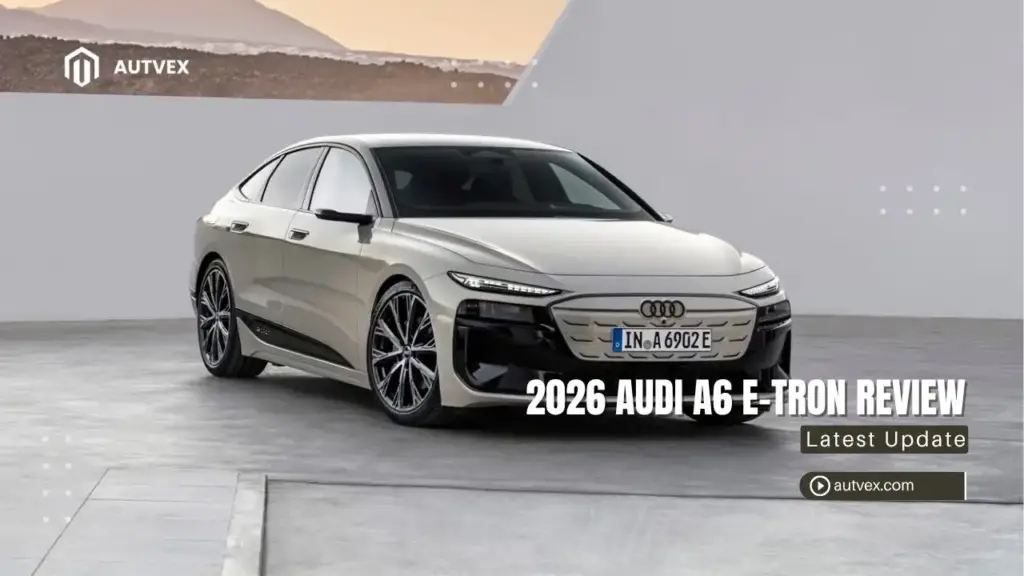You may also like:
The 2025 Audi S6 e-tron delivers 543 horsepower, 324 miles of EPA-estimated range, and lightning-fast 270 kW charging in a luxury electric sportback starting at $75,000[1]. This all-new S-badged sedan blends premium German engineering with cutting-edge electric technology, targeting buyers who want performance without Tesla’s minimalism[2]. Built on the Premium Platform Electric (PPE) architecture shared with the Porsche Macan Electric, the S6 e-tron promises to redefine what American consumers expect from luxury EVs[3].
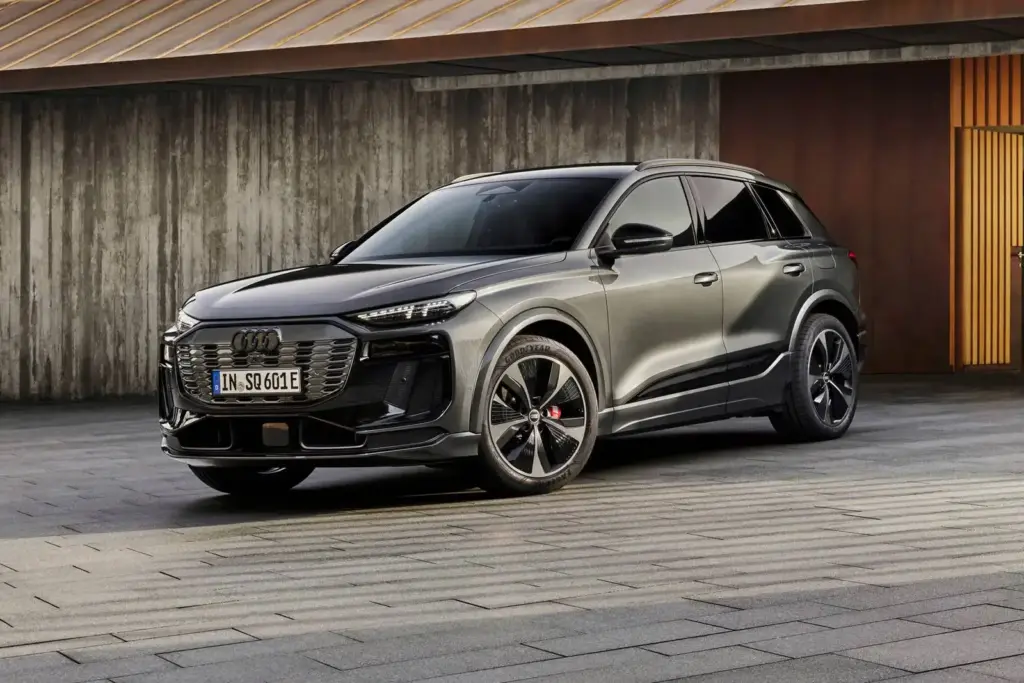
Overview: What Is the 2025 Audi S6 e-tron?
Key Specifications at a Glance
The S6 e-tron represents Audi’s most ambitious electric performance sedan to date. At its core sits a sophisticated dual-motor all-wheel-drive powertrain generating 496 horsepower in standard mode and 543 horsepower when launch control engages[1]. This configuration propels the sportback from 0-60 mph in just 3.7 seconds while maintaining an EPA-estimated range of 324 miles with 20-inch wheels[1].
| Specification | Value |
|---|---|
| Starting Price | $75,000 (Premium trim) |
| Powertrain | Dual-motor AWD electric |
| Total Output | 543 hp (launch control) / 496 hp (standard) |
| 0-60 mph | 3.7 seconds |
| EPA Range | 324 miles (combined) |
| Top Speed | 149 mph (electronically limited) |
| Battery Capacity | 94.4 kWh (net usable) |
| Charging Speed | 270 kW DC fast charging |
| Platform | Premium Platform Electric (PPE) |
According to Autvex experts, the S6 e-tron fills a critical gap in Audi’s electrification strategy by offering traditional luxury buyers a compelling alternative to Tesla’s tech-focused approach[2]. Understanding what Quattro in Audi means helps appreciate the sophisticated all-wheel-drive system that underpins this electric performance sedan.
Who Should Consider the S6 e-tron?
The ideal S6 e-tron buyer fits several profiles. Luxury EV buyers seeking performance without Tesla’s minimalism will appreciate the traditional premium materials, physical controls, and refined cabin ambiance. Current shoppers comparing the BMW i5 or Mercedes-AMG EQE will find the S6’s superior range and faster charging compelling advantages[4].
Audi loyalists transitioning from gas-powered S models represent another key demographic. While the electric S6 delivers less visceral engagement than its combustion predecessors, it compensates with instant torque delivery and near-silent operation. For context on how long the car buying process takes, buyers should allocate 2-4 hours at dealerships to complete test drives and paperwork when shopping for this vehicle.
Buyers prioritizing range over extreme driving dynamics will find the 324-mile EPA estimate particularly attractive for long-distance commuting[1]. Real-world owner feedback from European markets reveals families wanting sportback cargo versatility also gravitate toward this model. The hatchback design provides more practical cargo access than traditional sedans, making it suitable for active lifestyles requiring weekend gear transport[5].
Model Year Changes for 2025
The 2025 S6 e-tron arrives as an all-new model with no previous electric S6 predecessor[1]. This marks Audi’s first S-badged sedan built exclusively on electric-only architecture, representing a significant milestone in the brand’s electrification timeline. Unlike European markets where both Sportback and Avant (wagon) body styles are available, US buyers receive only the Sportback configuration[6].
The PPE platform debuts in the US market with this model, bringing 800-volt architecture advantages including ultra-rapid charging capabilities. For perspective on how many miles Audi vehicles typically last, the S6 e-tron’s electric powertrain promises even greater longevity potential with fewer moving parts requiring maintenance.
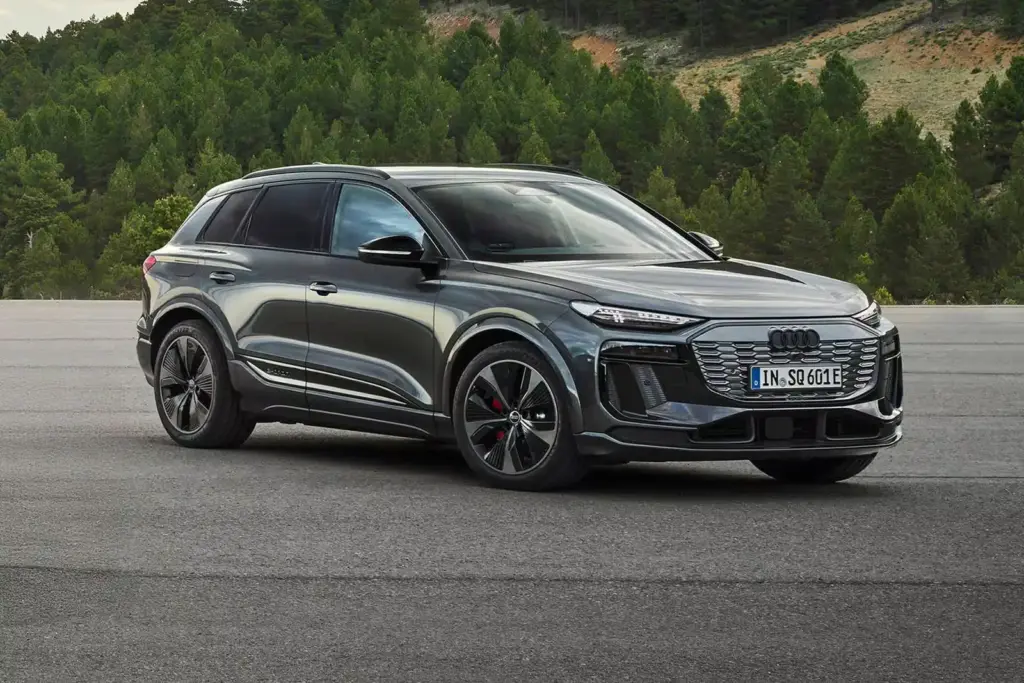
Performance & Driving Experience
Powertrain and Acceleration
The S6 e-tron’s dual-motor system employs distinct motor technologies for optimal efficiency and performance. The front axle features an induction AC motor producing 188 horsepower and 203 lb-ft of torque, while the rear axle utilizes a permanent-magnet synchronous AC motor generating 375 horsepower and 428 lb-ft[1].
Combined system output reaches 496 horsepower in normal driving modes, escalating to 543 horsepower when launch control activates[1]. This configuration achieves a 3.7-second 0-60 mph sprint—slightly quicker than the BMW i5 M60’s 3.8 seconds but trailing the Tesla Model S’s blistering 3.1-second time[4]. The electronically limited top speed of 149 mph ensures safe high-speed cruising on American highways.
Performance Comparison:
- S6 e-tron: 0-60 mph in 3.7 seconds, 543 hp with launch control
- BMW i5 M60: 0-60 mph in 3.8 seconds, 590 hp
- Tesla Model S: 0-60 mph in 3.1 seconds, 670 hp
- Mercedes-AMG EQE 53: 0-60 mph in 3.4 seconds, 617 hp
Instant torque delivery characterizes electric performance, with the rear-biased AWD system providing improved agility during spirited driving[2]. Unlike traditional gas engines requiring time to build power, the electric motors deliver maximum torque from zero rpm, creating a uniquely smooth yet forceful acceleration experience.
Handling and Chassis Dynamics
Standard adaptive air suspension features four height adjustments, allowing the S6 to lower for improved aerodynamics at highway speeds or raise for clearing obstacles[2]. Sport-tuned dampers and revised anti-roll bars differentiate the S6 from the softer A6 e-tron, providing sharper turn-in response and reduced body roll during aggressive cornering[3].
The rear-biased Quattro all-wheel-drive system channels more power rearward under normal driving conditions, enhancing handling balance. However, critics consistently note the driving feel remains “too clinical” for traditional S-badge expectations[2]. While competent and confidence-inspiring, the S6 lacks the emotional engagement that made previous gas-powered S models so memorable to enthusiasts.
Stiffer suspension tuning compared to the standard A6 e-tron improves handling precision but introduces a firmer ride quality. The air suspension compensates somewhat by providing variable firmness across different driving modes, though purists seeking track-focused dynamics might prefer the more expensive Porsche Taycan alternative[4].
Ride Quality and Comfort
The S6 e-tron strikes a deliberate balance between sportiness and daily comfort[3]. At highway speeds of 80-85 mph (130-140 km/h), the cabin remains nearly silent thanks to exceptional sound insulation and the absence of engine noise[5]. This refinement makes long-distance travel particularly pleasant, with wind and tire noise well-controlled even at triple-digit speeds.
While firmer than the comfort-oriented A6 e-tron, the S6 still qualifies as refined for a luxury EV. The air suspension absorbs highway expansion joints and minor road imperfections without transmitting harsh impacts to occupants. Real-world owner reports from European markets indicate the ride quality suits extended journeys with four adults comfortably[5].
Different driving modes alter suspension firmness dramatically. Comfort mode provides the most compliant ride for daily commuting, while Dynamic mode stiffens dampers for spirited back-road driving. The adaptive system reads road conditions continuously, adjusting damping rates in real-time for optimal balance[2].
Real-World Driving Impressions
Owner feedback reveals smooth, silent acceleration with deceptive speed as a defining characteristic[5]. The instant torque delivery can surprise unprepared passengers, yet the power arrives so seamlessly that aggressive acceleration feels effortless rather than violent. One-pedal driving capability with regenerative braking reduces brake wear while providing intuitive speed control in urban environments[3].
The 5,300-pound curb weight influences handling dynamics, creating a planted, substantial feel during cornering. The chassis manages this mass exceptionally well, with minimal body roll and predictable balance through sweeping curves. However, the weight becomes apparent during rapid direction changes or tight autocross-style maneuvers[1].
Compared to gas-powered S6 predecessors, the electric version feels less engaging emotionally. Automotive journalist assessments consistently praise competence while noting reduced driving involvement[2]. For buyers prioritizing smooth, refined transportation over visceral driving thrills, this compromise proves acceptable. Those seeking maximum engagement should consider alternatives like the best Audi sports car options available.
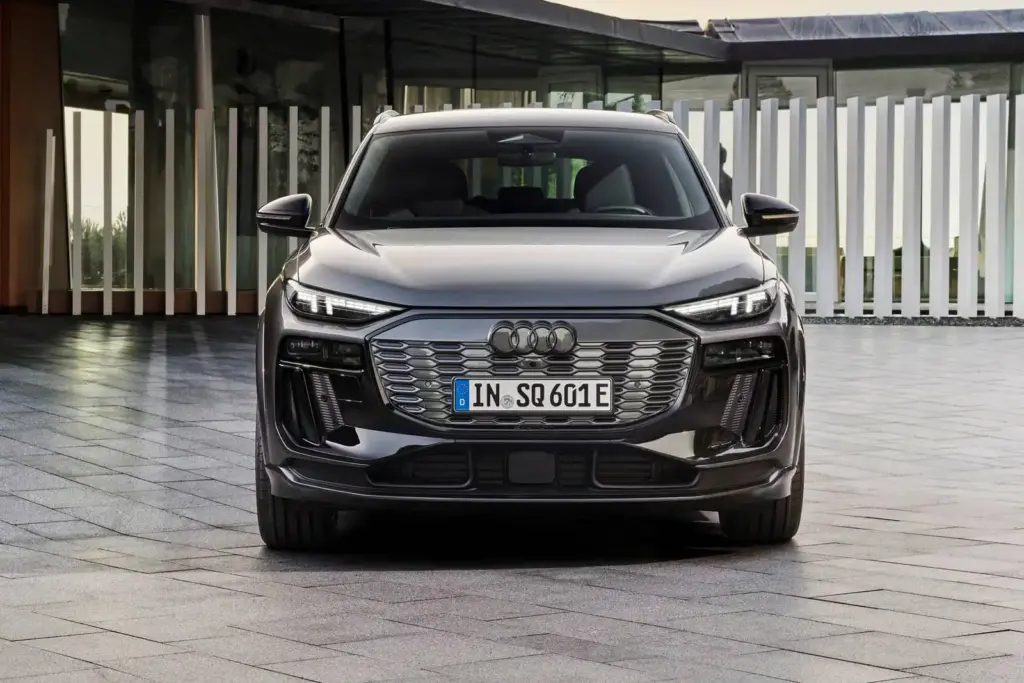
Electric Range, Charging & Efficiency
EPA Range Estimates
The S6 e-tron achieves an EPA-estimated range of 324 miles combined with 20-inch wheels, translating to efficiency ratings of 98 MPGe combined (103 city / 93 highway)[1]. European WLTP estimates reach 398-405 miles, though these more optimistic testing procedures don’t reflect real-world American driving conditions[2].
The Sportback body style receives optimization for aerodynamics, achieving a remarkable 0.21 drag coefficient—best in its competitive class[1]. This slippery profile directly contributes to extended range by reducing wind resistance at highway speeds, where aerodynamics significantly impact energy consumption.
| Range Metric | Value |
|---|---|
| EPA Combined | 324 miles |
| EPA City | 103 MPGe |
| EPA Highway | 93 MPGe |
| WLTP (European) | 398-405 miles |
| Drag Coefficient | 0.21 Cd |
For buyers considering whether they can charge an Audi at Tesla Supercharger stations, Audi announced NACS adapter availability beginning September 2025, expanding charging options significantly[7].
Real-World Range Performance
Owner reports from European markets provide valuable real-world context. City driving yields approximately 330 miles in moderate weather conditions, while highway driving at 70-75 mph reduces range to 280 miles[5]. These figures align closely with EPA estimates, suggesting accurate testing procedures.
Winter range reduction of 15-20% represents typical cold-weather EV performance[5]. Battery chemistry efficiency decreases in freezing temperatures, requiring additional energy for both propulsion and cabin heating. Owners should anticipate 260-275 mile winter ranges in northern climates experiencing prolonged sub-freezing conditions.
Roof rack installation dramatically impacts aerodynamics, reducing range by approximately 50 miles due to increased wind resistance[5]. Highway speeds above 75 mph also significantly reduce range, as aerodynamic drag increases exponentially with velocity. Maintaining 65-70 mph optimizes efficiency during long-distance travel.
Autvex analysis shows the S6 e-tron’s real-world range performance exceeds most luxury EV competitors, providing practical viability for American road trip distances. For perspective on how many miles are good for a used car, the S6’s battery warranty covers 100,000 miles, suggesting excellent longevity expectations.
Charging Speed and Infrastructure
The 800-volt architecture enables industry-leading 270 kW DC fast charging under ideal conditions[1]. This allows 10-80% charging in approximately 21 minutes at compatible high-power charging stations—among the fastest in the luxury EV segment[3]. The 9.6 kW onboard AC charger supports Level 2 home charging, completing 0-100% charges overnight in roughly 10-11 hours.
Charging Speed Comparison:
- Audi S6 e-tron: 270 kW peak (10-80% in 21 minutes)
- BMW i5 M60: 205 kW peak (10-80% in 31 minutes)
- Mercedes-AMG EQE: 170 kW peak (10-80% in 32 minutes)
- Tesla Model S: 250 kW peak (10-80% in 27 minutes)
Compatible with the CCS1 charging standard, the S6 features dual charge ports on each side for convenient access regardless of charging station orientation[1]. No NACS (Tesla) adapter comes standard, though Audi announced availability beginning late 2025/early 2026[7]. For information on best EV chargers for home installation, Autvex provides comprehensive buying guides.
2025 model year purchases include one year of complimentary DC fast charging through Audi Electrify America free charging, adding significant value for early adopters[8]. The Plug&Charge technology enables seamless charging without swiping credit cards or tapping screens—simply plug in and charging begins automatically with billing handled through the myAudi app[8].
Battery Specifications
The liquid-cooled lithium-ion battery pack features 100 kWh gross capacity with 94.4 kWh net usable capacity[1]. This buffer protects battery longevity by preventing complete discharge cycles that accelerate degradation. The 800-volt architecture provides dual benefits: faster charging speeds and improved efficiency by reducing electrical resistance losses.
Over-the-air software updates enable battery management optimization without dealer visits[3]. Audi engineers can refine charging curves, regenerative braking algorithms, and thermal management strategies remotely as real-world data accumulates. This capability ensures the S6 e-tron improves throughout ownership rather than becoming obsolete.
The 8-year/100,000-mile battery warranty provides peace of mind for US market buyers[1]. This coverage protects against capacity degradation beyond specified thresholds, ensuring batteries retain minimum performance levels throughout the warranty period. Real-world battery longevity typically exceeds warranty periods, with modern EV batteries demonstrating exceptional durability.
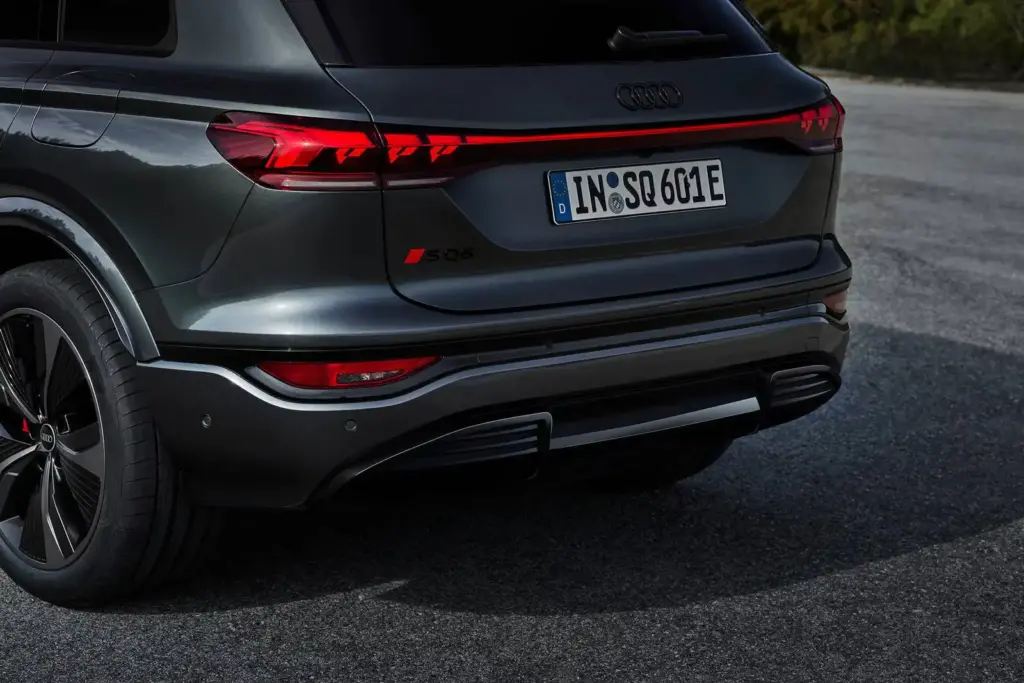
2025 Audi S6 e-tron Trim Levels & Pricing
Premium Trim ($75,000-$78,700)
The entry-level Premium trim includes surprisingly comprehensive standard equipment. Exterior features include 21-inch wheels with all-season tires, Matrix LED headlights with digital daytime running lights, and power-folding heated side mirrors[1]. The sport adaptive air suspension comes standard across all trims, differentiating the S6 from softer-riding luxury EVs.
Premium Trim Standard Features:
- 21-inch S-design wheels
- Matrix LED headlights with digital DRLs
- Sport adaptive air suspension
- Heated and massaging front seats in Valcona leather
- 14.5-inch MMI touchscreen infotainment
- 11.9-inch Audi Virtual Cockpit digital gauge cluster
- Four-zone automatic climate control
- Wireless charging pad
- Wireless Apple CarPlay and Android Auto integration
Interior appointments feature heated and massaging front seats upholstered in premium Valcona leather with S-logo embossing[1]. The Digital Stage curved display integrates an 11.9-inch digital instrument cluster with a 14.5-inch central MMI touchscreen, creating a seamless information interface. Wondering about what is MSRP? This manufacturer’s suggested retail price serves as the baseline before dealer negotiations and incentives.
Four-zone automatic climate control ensures all occupants maintain individual comfort preferences during extended journeys. Wireless smartphone integration includes both Apple CarPlay and Android Auto, though buyers should note that Audi charges for Apple CarPlay on some older models—the S6 e-tron includes it as standard[1].
Premium Plus Trim ($79,000-$80,200)
The Premium Plus trim adds $4,000-$5,000 to the base price while delivering substantial technology and convenience upgrades[1]. Adaptive cruise assist with lane guidance provides semi-automated highway driving capability, reducing fatigue during long-distance travel. The Bang & Olufsen Premium 3D sound system features 20 speakers and 830 watts of amplification, delivering concert-hall audio quality[2].
Premium Plus Additional Features:
- Adaptive cruise assist with lane guidance
- Bang & Olufsen 3D sound (20 speakers, 830 watts)
- Heated rear seats
- LED interior lighting plus package
- Top-view camera with Virtual 360 view
- Black Optic styling package
- Power soft-closing doors
Heated rear seats extend comfort to second-row passengers during winter months. The LED interior lighting plus package provides customizable ambient lighting with multiple color options and intensity levels. Top-view camera systems with Virtual 360-degree views simplify parking in tight urban spaces[1].
Prestige Trim ($81,000-$84,100)
The range-topping Prestige trim justifies its premium primarily through advanced technology features[1]. HD Matrix LED headlights with animation sequences provide enhanced nighttime visibility while adding visual drama during approach. The augmented reality head-up display projects navigation directions and key information directly onto the road ahead, improving situational awareness without requiring drivers to glance away from traffic[2].
Prestige Exclusive Features:
- HD Matrix LED headlights with animation
- Augmented reality head-up display
- Remote park assist plus (semi-automated parking)
- 10.9-inch passenger display screen
- Power rear window shades
- Manual rear side window sunshades
- All Premium Plus features included
Remote park assist plus enables semi-automated parking via smartphone control from outside the vehicle—particularly useful for tight garage spaces[1]. The 10.9-inch passenger display screen provides entertainment functionality for front passengers without distracting the driver. Power rear window shades block intense sunlight during summer months, improving rear passenger comfort.
Which Trim Offers Best Value?
Most buyers will find the Premium Plus trim delivers optimal value[2]. The Bang & Olufsen audio system alone justifies much of the price premium for music enthusiasts, while adaptive cruise assist significantly reduces highway driving fatigue. The Premium trim suffices for range-focused, budget-conscious buyers accepting basic (though still luxurious) amenities.
The Prestige trim targets tech enthusiasts specifically seeking the augmented reality head-up display and semi-automated parking features. Unless these specific technologies appeal strongly, the Premium Plus provides better overall value for most American consumers. For buyers also considering competitors, comparing the Audi Q5 vs BMW X3 helps understand Audi’s competitive positioning in the luxury segment.
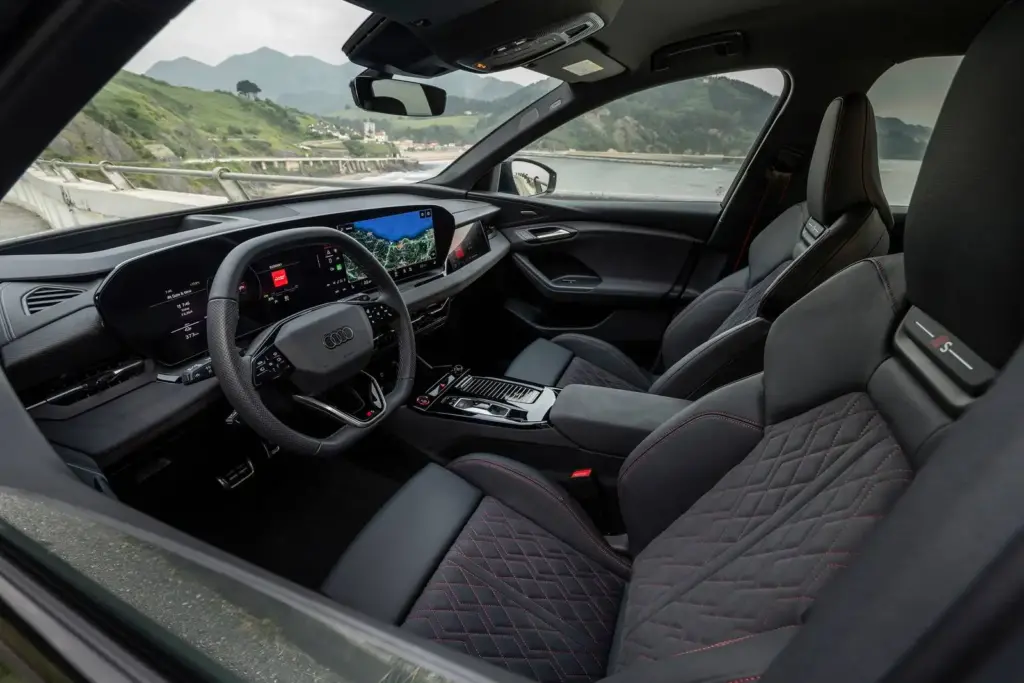
Interior Design, Technology & Materials
Cabin Layout and Quality
The “Digital Stage” curved display dominates the dashboard, integrating an 11.9-inch instrument cluster with a 14.5-inch central touchscreen[1]. This seamless interface provides comprehensive vehicle information, navigation, entertainment, and vehicle settings through an intuitive menu structure. Fine Nappa leather with S-logo embossing covers front sport seats as standard, conveying premium quality through sight and touch[2].
Carbon fiber inserts and micro-suede trim accents add visual interest throughout the cabin. Four-zone climate control features individual rear settings, allowing back-seat passengers complete temperature control independence. Soft-close doors on Premium Plus and Prestige trims add a subtle luxury touch, pulling doors fully closed with minimal effort[1].
However, some early owners note the interior feels less luxurious than the price suggests[5]. The lower dashboard design draws comparisons to more budget-friendly options, though overall build quality remains solid with minimal rattles or squeaks. Piano black trim surfaces become fingerprint magnets immediately, requiring frequent cleaning to maintain pristine appearance[5].
Infotainment and Connectivity
Android Automotive OS with Google built-in powers the infotainment system, providing access to Google Maps, Google Assistant, and the Google Play Store for third-party applications[2]. Wireless Apple CarPlay and Android Auto integration ensures compatibility with both major smartphone ecosystems. A ChatGPT-powered AI voice assistant handles natural language requests, though some owners report occasional comprehension issues with complex commands[3].
Technology Features:
- Android Automotive OS with Google integration
- Wireless Apple CarPlay and Android Auto
- ChatGPT-powered AI voice assistant
- App store for third-party applications
- 4G LTE Wi-Fi hotspot with remote monitoring
- Over-the-air software update capability
The 4G LTE Wi-Fi hotspot with remote monitoring enables pre-conditioning, charging status checks, and vehicle location tracking through the myAudi smartphone app[1]. Over-the-air updates deliver new features and improvements without dealer visits, though Audi’s update frequency trails Tesla’s more aggressive schedule[3].
A common complaint notes the MMI system occasionally hangs or freezes, requiring restarts[5]. While less intuitive than Tesla’s interface according to some reviewers, the Audi system provides more physical controls for frequently accessed functions—a preference divide splitting buyers along generational lines.
Interior Space and Practicality
Seating accommodates five adults officially, though four fit comfortably for long trips[1]. The rear seat floor sits slightly elevated due to battery pack packaging beneath, reducing rear legroom marginally compared to gas-powered sedans. The 116-inch wheelbase provides decent legroom, though tall passengers might prefer more generous accommodations[1].
The Sportback hatchback cargo area delivers more versatility than traditional sedan trunks. The wide opening and folding rear seats enable furniture transport and weekend gear loading that would challenge conventional trunk designs. However, no front trunk (frunk) exists due to motor and cooling system placement in the front compartment[1].
Real-world owner testing with four adults and a large roof box demonstrates practical long-distance capability[5]. The cabin remains comfortable and quiet even during extended highway journeys exceeding 2,000 miles. Storage compartments throughout provide convenient phone, wallet, and personal item placement.
Technology Features Comparison
The augmented reality head-up display (Prestige trim only) projects navigation arrows onto the actual road surface ahead[2]. This technology proves particularly valuable navigating complex urban interchanges where traditional heads-up displays struggle with spatial orientation. The system adapts projection distance and size based on vehicle speed for optimal visibility.
Bang & Olufsen audio outperforms BMW and Mercedes base systems according to multiple professional reviews[2]. The 20-speaker configuration with 830 watts delivers immersive 3D soundstaging, though audiophile-grade aftermarket upgrades exist for the most demanding listeners. Standard audio systems (not recommended) prove adequate but unremarkable for music enthusiasts[5].
The MMI system experiences occasional glitches per early owner reports, though over-the-air updates continually address software issues[5]. Response speed generally impresses, with minimal lag between inputs and system reactions. Over-the-air updates arrive less frequently than Tesla’s schedule but more regularly than traditional manufacturers’ previous update cadences[3].
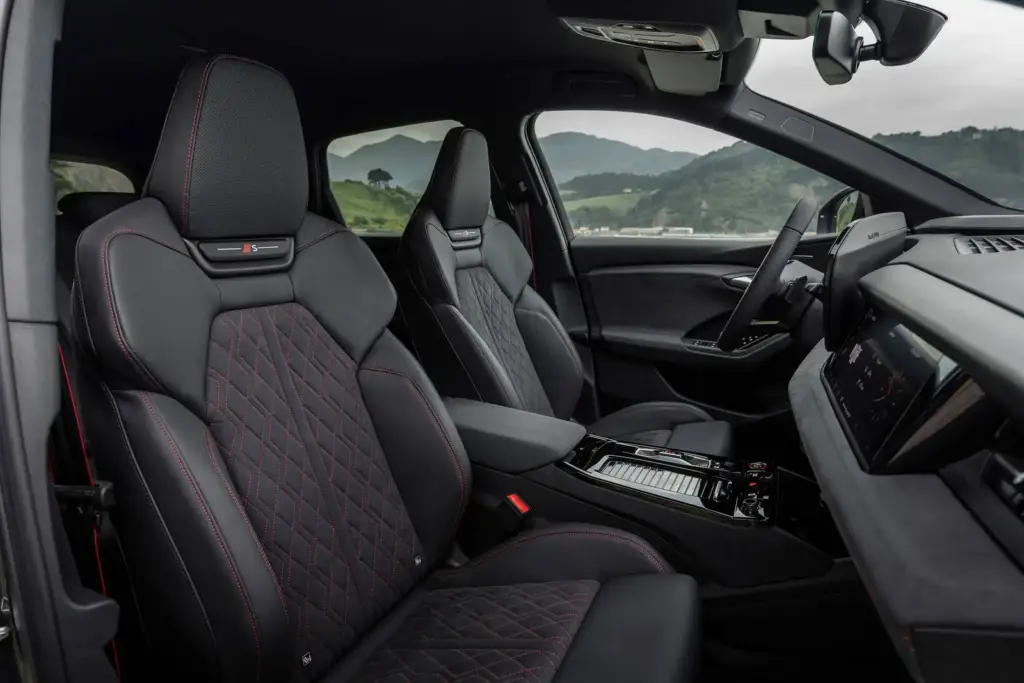
Exterior Styling & Design Elements
Sportback Silhouette and Aerodynamics
The low-slung, coupé-like profile features a dramatically raked rear creating distinctive visual drama[1]. Measuring 194 inches long, 75.7 inches wide, and 58.5 inches tall, the S6 e-tron occupies substantial road presence without appearing oversized. The exceptional 0.21 drag coefficient positions it as the most aerodynamically efficient vehicle in its competitive class[1].
The inverted Singleframe grille executed in body color with matte silver accents distinguishes the electric S6 from combustion-powered Audis[2]. This design element communicates electric propulsion instantly while maintaining brand identity recognition. Flush door handles and optimized underbody panels contribute meaningfully to overall aerodynamic efficiency.
S-Specific Design Upgrades
The S6 receives distinctive visual enhancements differentiating it from standard A6 e-tron models. Available 20-inch or 21-inch S-design wheels feature aggressive spoke patterns conveying performance intent[1]. Red brake calipers with S logos provide visual pop through wheel spokes while signaling upgraded braking capability.
S6-Specific Design Elements:
- 20-inch or 21-inch S-design wheels
- Red brake calipers with S logos
- Dual-element LED headlights with multiple signature options
- Matte chrome mirror housings in silver
- Black inlay symbolizing battery as vehicle’s heart
- Sport-tuned front and rear bumper designs
Dual-element LED headlights offer multiple signature lighting patterns, allowing personalization of the vehicle’s nighttime appearance[2]. Matte chrome mirror housings in silver add subtle premium touches throughout the exterior. A black inlay symbolizes the battery as the vehicle’s heart—a design metaphor connecting form with function[2].
Available Exterior Colors
Seven sophisticated exterior colors cater to diverse aesthetic preferences. Malpelo Blue Metallic delivers vibrant, eye-catching presence ideal for buyers seeking attention. Mythos Black Metallic provides timeless elegance with deep, rich tones that photograph beautifully[1].
Color Options:
- Malpelo Blue Metallic: Vibrant, eye-catching hue emphasizing dynamic character
- Mythos Black Metallic: Timeless elegance with deep, rich tones
- Glacier White Metallic: Clean, modern finish highlighting contemporary design
- Plasma Blue Metallic: Unique S-line exclusive option
- Daytona Grey Pearl Effect: Sophisticated choice with pearl effect adding depth
- Siam Beige Metallic: Warm, elegant S-line exclusive
- Magnet Grey: Sleek, modern metallic finish
Glacier White Metallic offers clean, modern aesthetics highlighting the vehicle’s futuristic proportions. Plasma Blue Metallic and Siam Beige Metallic remain exclusive to S-line and S models, providing ownership distinction. Daytona Grey Pearl Effect adds sophisticated depth through multi-layer paint processes[1].
Design Critiques and Praise
Professional reviewers express mixed opinions regarding exterior styling. Some find the front end “unappealing” in photographs, though many note the design translates better in person than images suggest[5]. The thick-waisted styling polarizes opinions compared to sleeker competitors like the 2025 BMW i5 or Mercedes-AMG EQE.
Multiple reviewers conclude the S6 doesn’t represent Audi’s “most handsome effort”[2]. The Sportback roofline creates practical cargo advantages but compromises visual elegance compared to traditional sedan proportions. However, several owners report strangers complimenting the design unexpectedly—suggesting photographs fail to capture the vehicle’s road presence accurately[5].
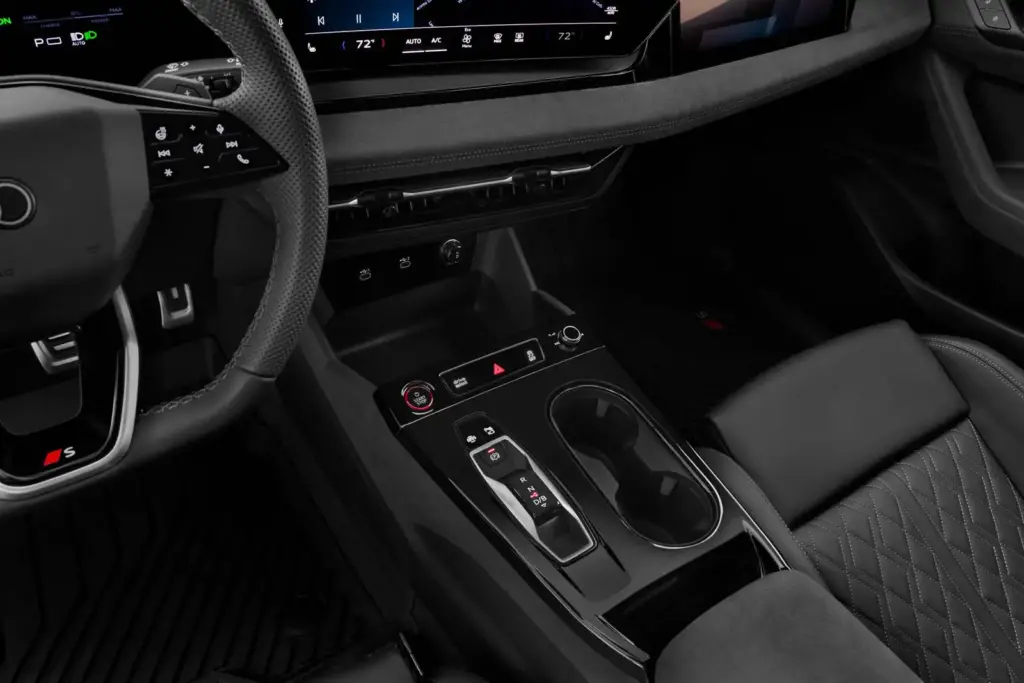
Safety Features & Driver Assistance
Standard Safety Technologies
All S6 e-tron trims include comprehensive passive and active safety equipment. Automated emergency braking with pedestrian detection monitors forward traffic, applying brakes automatically when collision risks materialize[1]. Lane departure warning with Active Lane Assist gently steers the vehicle back toward lane center when unintended drift occurs.
Standard Safety Features:
- Automated emergency braking with pedestrian detection
- Lane departure warning with Active Lane Assist
- Driver drowsiness monitor
- Road sign recognition
- Front and rear parking sensors
Driver drowsiness monitoring analyzes steering patterns and driving duration, recommending rest breaks when fatigue indicators appear. Road sign recognition displays speed limits and other traffic signs within the instrument cluster for enhanced awareness. Front and rear parking sensors provide audible and visual guidance during low-speed maneuvering[1].
Available Advanced Driver Aids
Premium Plus and Prestige trims gain adaptive cruise control with lane-centering capability, providing semi-automated highway driving[1]. This system maintains set speeds, adjusts following distance automatically, and keeps the vehicle centered within lane markings during gentle curves. While not full autonomous driving, it significantly reduces fatigue during extended highway journeys.
Surround-view camera systems (Premium Plus and above) compile multiple camera feeds into a virtual 360-degree overhead view. This technology simplifies parking in tight urban spaces and navigating narrow obstacles. Remote park assist plus (Prestige only) enables smartphone-controlled parking from outside the vehicle—useful for extremely tight garage spaces[1].
Traffic jam assist provides low-speed automation during congested highway conditions. The system handles steering, acceleration, and braking inputs below approximately 40 mph, reducing stress during stop-and-go traffic. However, drivers must maintain attention and readiness to resume control at any moment[2].
Safety Ratings and Reliability
Crash test ratings from IIHS and NHTSA remain pending at publication time, though results are expected during the 2025 model year[1]. The PPE platform shares structural engineering with the proven Porsche Macan Electric, suggesting strong safety performance likely. Audi’s historical commitment to occupant protection provides confidence pending official test results.
Early owner reports mention MMI software glitches and safety system false alerts[5]. Lane-keep assist and emergency braking occasionally trigger without genuine hazards present, creating momentary concern. Audi addresses these issues through over-the-air software updates as real-world data accumulates[3].
Some owners note Advanced Driver Assistance System (ADAS) sensors prove overly sensitive, generating false warnings during normal driving[5]. While better overly cautious than dangerously permissive, frequent false alerts can diminish driver trust in legitimate warnings over time. Software refinements should improve discrimination between genuine hazards and benign situations.
For context on understanding what happens when your car is totaled but still drivable, the S6 e-tron’s advanced safety systems help prevent accidents that could lead to such scenarios in the first place.
Warranty and Maintenance Coverage
The 4-year/50,000-mile limited warranty matches the powertrain warranty duration—unusual given many manufacturers provide longer powertrain coverage[1]. The high-voltage battery receives extended protection through an 8-year/100,000-mile warranty in the US market, providing peace of mind regarding expensive component replacement costs[1].
Warranty Coverage:
- 4-year/50,000-mile limited vehicle warranty
- 4-year/50,000-mile powertrain warranty
- 8-year/100,000-mile high-voltage battery warranty
- No complimentary scheduled maintenance included
- First battery service recommended at 12,000 miles
No complimentary scheduled maintenance comes included, unlike some luxury competitors offering several years of prepaid service[1]. However, EV maintenance requirements prove substantially less demanding than combustion vehicles. The first battery service recommended at 12,000 miles primarily involves software checks and cooling system inspection[3].
For buyers wondering if Audi can be serviced anywhere, dealership visits remain necessary for warranty-covered repairs, though mobile service options continue expanding.
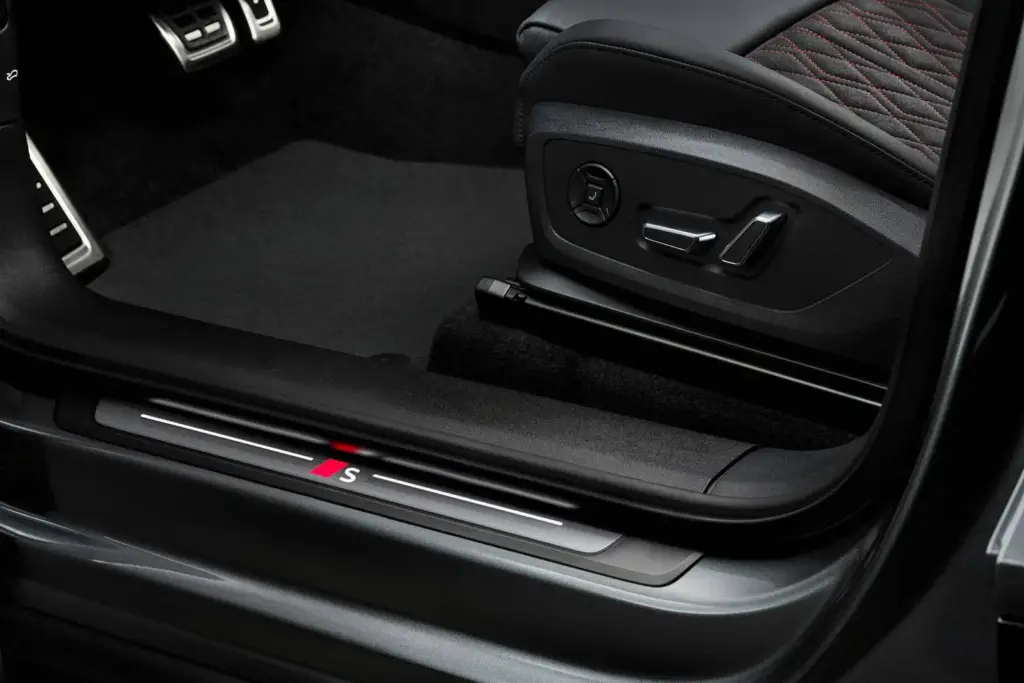
Competitive Comparison & Alternatives
2025 Audi S6 e-tron vs BMW i5 M60
The BMW i5 M60 starts at $68,275—nearly $7,000 less than the S6 e-tron Premium[4]. The BMW delivers 590 horsepower compared to the Audi’s 543 horsepower, yet completes 0-60 mph in a slightly slower 3.8 seconds versus 3.7 seconds. This apparent contradiction reflects differences in transmission gearing and torque delivery curves.
| Category | Audi S6 e-tron | BMW i5 M60 |
|---|---|---|
| Starting Price | $75,000 | $68,275 |
| Horsepower | 543 hp | 590 hp |
| 0-60 mph | 3.7 seconds | 3.8 seconds |
| EPA Range | 324 miles | 239-253 miles |
| Charging Speed | 270 kW | 205 kW |
| Battery Size | 94.4 kWh | 81.2 kWh |
The S6 e-tron’s decisive advantage emerges in range—71+ miles beyond the i5 M60’s capability[4]. Charging speed also favors the Audi with 270 kW peak versus the BMW’s 205 kW. These practical differences matter significantly for American buyers frequently traveling between cities separated by hundreds of miles.
The i5 M60 delivers more engaging driving dynamics according to multiple professional reviews, better embodying the sporty character traditional “M” and “S” badges promise[4]. For driving enthusiasts prioritizing emotional connection over practical range, the BMW justifies consideration despite inferior efficiency metrics.
Verdict: The S6 e-tron better suits long-distance travel and daily practicality, while the i5 M60 appeals to driving enthusiasts accepting range compromises for enhanced engagement[4].
2025 Audi S6 e-tron vs Tesla Model S
Tesla’s Model S starts at $76,380—nearly identical to the S6 e-tron Premium Plus trim pricing[4]. The Tesla produces 670 horsepower and completes 0-60 mph in just 3.1 seconds—substantially quicker than the Audi. With 402 miles of EPA-estimated range, the Model S also travels 78 miles farther per charge than the S6 e-tron[4].
| Category | Audi S6 e-tron | Tesla Model S AWD |
|---|---|---|
| Starting Price | $78,700 | $76,380 |
| Horsepower | 543 hp | 670 hp |
| 0-60 mph | 3.7 seconds | 3.1 seconds |
| EPA Range | 324 miles | 402 miles |
| Charging Network | CCS (third-party) | Supercharger (proprietary) |
| Interior Quality | Premium leather, materials | Minimalist, vegan leather |
The S6 e-tron counters with traditional luxury appointments including premium leather, superior material quality, and physical controls many drivers prefer[2]. Tesla’s minimalist approach polarizes opinions—some buyers love the uncluttered aesthetic while others find it sterile and unwelcoming. The Audi provides a more conventional luxury experience familiar to traditional premium sedan buyers.
Tesla’s proprietary Supercharger network offers superior charging infrastructure with more locations and higher reliability than third-party CCS networks[4]. However, Audi announced NACS adapter availability beginning late 2025, eventually providing S6 e-tron access to Tesla’s extensive charging infrastructure[7].
Verdict: The S6 suits luxury-focused buyers valuing traditional materials and conventional interfaces, while the Model S appeals to tech-forward buyers prioritizing performance and software sophistication[4].
2025 Audi S6 e-tron vs Mercedes-AMG EQE
The Mercedes-AMG EQE 53 starts above $85,000—over $10,000 more expensive than the S6 e-tron Premium[4]. The AMG produces 617 horsepower, providing stronger acceleration than the Audi. However, EPA range reaches only 220-230 miles—nearly 100 miles less than the S6 e-tron’s capability[4].
| Category | Audi S6 e-tron | Mercedes-AMG EQE 53 |
|---|---|---|
| Starting Price | $75,000 | $85,000+ |
| Horsepower | 543 hp | 617 hp |
| EPA Range | 324 miles | 220-230 miles |
| Charging Speed | 270 kW | 170 kW |
| Cargo Space | Sportback hatchback | Traditional sedan trunk |
Charging speed heavily favors the Audi with 270 kW peak compared to the Mercedes’ 170 kW—a 100 kW advantage translating to significantly shorter charging stops[4]. The S6 e-tron’s Sportback hatchback design also provides superior cargo versatility compared to the EQE’s traditional sedan trunk configuration.
The Mercedes delivers sharper styling according to some reviewers, though design preferences remain subjective. Build quality and interior refinement prove excellent in both vehicles, with the Mercedes perhaps edging slightly ahead in absolute luxury metrics. However, the Audi’s $10,000+ price advantage and dramatically superior range make it the better overall value[4].
Verdict: The S6 e-tron offers better overall value and practicality with 100+ miles more range, faster charging, lower pricing, and cargo versatility[4].
2025 Audi S6 e-tron vs Porsche Taycan
The Porsche Taycan 4S starts at $101,395—over $26,000 more expensive than the S6 e-tron Premium[4]. Both vehicles share platform DNA through the PPE architecture, though the Taycan utilizes Porsche’s J1 platform—a closely related design. The Taycan delivers 0-60 mph in 3.8 seconds, marginally slower than the S6 e-tron’s 3.7-second time[4].
| Category | Audi S6 e-tron | Porsche Taycan 4S |
|---|---|---|
| Starting Price | $75,000 | $101,395 |
| Platform | PPE (shared) | J1 (Porsche-specific) |
| 0-60 mph | 3.7 seconds | 3.8 seconds |
| EPA Range | 324 miles | 276-283 miles |
| Driving Dynamics | Comfortable, refined | Sharp, track-focused |
EPA range estimates favor the Audi by 40+ miles, providing meaningful practical advantages for long-distance travel[4]. However, the Taycan delivers superior driving engagement with sharper handling, more communicative steering, and track-focused dynamics that justify the Porsche badge prestige. Buyers seeking pure driving thrills will find the Taycan worth its substantial premium.
For practical luxury buyers prioritizing value, comfort, and real-world usability, the S6 e-tron delivers 80-90% of the Taycan’s capabilities at 75% of the price[4]. The $26,000+ savings could fund several years of charging costs or be applied toward desirable options. Buyers also comparing luxury SUVs might explore the Audi Q5 vs Genesis GV70 or Audi Q5 vs Lexus RX 350 for additional perspective.
Verdict: The S6 e-tron suits practical luxury buyers valuing comfort and range, while the Taycan appeals to driving enthusiasts accepting price premiums for enhanced engagement[4].
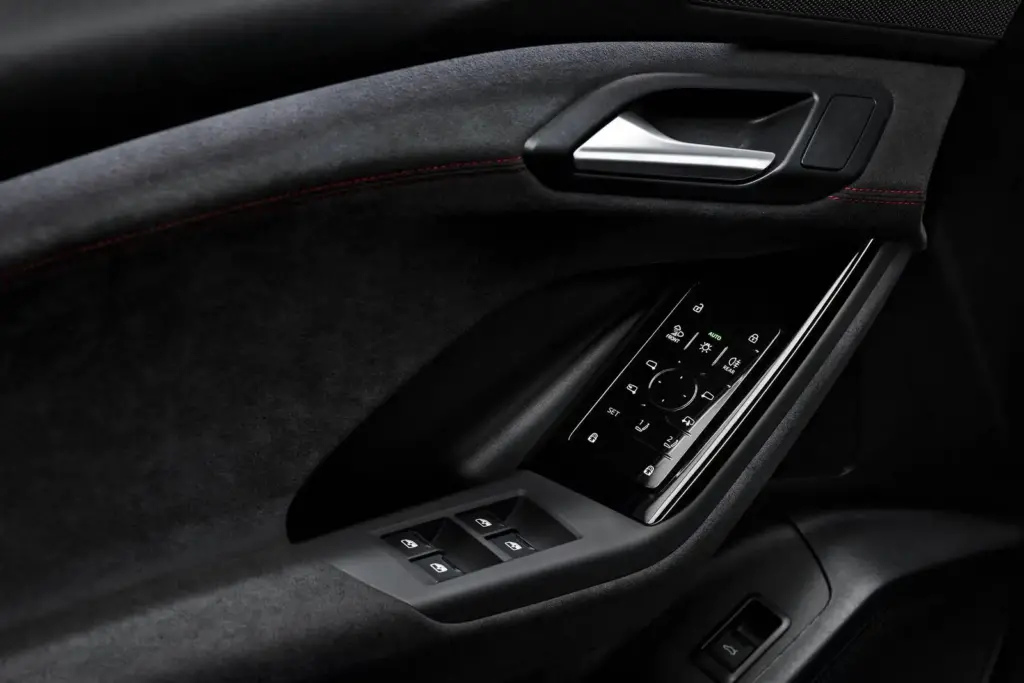
Common Problems, Owner Complaints & Reliability
Early Software and Technology Issues
The MMI infotainment system occasionally hangs displaying “Loading System, please wait” messages requiring restarts[5]. While frustrating, these software glitches typically resolve through over-the-air updates as Audi refines the Android Automotive OS integration. Early production units exhibit more frequent issues than later builds incorporating software improvements.
Safety system false alerts represent another common complaint. Lane-keep assist and emergency braking occasionally trigger without genuine hazards present[5]. These false positives can startle drivers and erode trust in legitimate warnings over time. Audi engineers continually refine sensor calibration through software updates addressing real-world scenarios.
Tire pressure monitoring systems sometimes fail to display properly within the digital instrument cluster[5]. This minor annoyance affects convenience rather than safety, as drivers can still manually check pressures using traditional gauges. Android Automotive OS proves less polished than Tesla’s interface according to some owners accustomed to the latter’s responsiveness and intuitive design[3].
Charging amperage information remains unavailable in owner’s manuals—an oversight given the technical nature of EV ownership[5]. Owners seeking to optimize charging strategies require this data for planning home electrical upgrades and understanding charging session dynamics.
Real-World Owner Experiences
Piano black trim surfaces become fingerprint magnets immediately after cleaning[5]. This cosmetic annoyance frustrates detail-oriented owners maintaining pristine interiors. Matte or brushed finishes would resist fingerprints better, though piano black conveys contemporary luxury aesthetics many manufacturers favor.
Advanced Driver Assistance System (ADAS) sensors prove overly sensitive, generating false warnings during normal driving[5]. Lane departure alerts trigger on well-marked roads without genuine drift, while emergency braking systems occasionally react to shadows or overhead signs misidentified as obstacles. Sensitivity adjustments through software updates should improve discrimination.
Alarm systems randomly activate during the first few weeks of ownership without apparent cause[5]. This issue typically self-resolves or requires dealer recalibration of proximity sensors. Some early production units shipped with unresolved software bugs affecting various systems—a reality of purchasing first-model-year vehicles from any manufacturer[5].
Dealer service knowledge gaps regarding the new PPE platform create occasional frustration. Technicians unfamiliar with 800-volt architecture and EV-specific systems require additional training time before diagnosing issues efficiently. This situation improves as dealer networks gain experience with the platform[3].
For buyers concerned about long-term ownership costs, understanding Audi Q5 years to avoid provides perspective on how Audi addresses first-year production issues in subsequent model years.
Build Quality and Material Concerns
Some owners perceive the interior as less luxurious than pricing suggests[5]. The lower dashboard design draws comparisons to more budget-friendly options, though upper dash, door panels, and seating areas maintain appropriate premium quality. Expectations for $75,000+ vehicles run exceptionally high, making even minor shortcomings conspicuous.
The interior design “reminds of budget-friendly” options per one detailed owner review[5]. While generally well-made, the S6 doesn’t quite match S-badge luxury expectations some buyers hold. Traditional combustion-powered S-model interiors perhaps set unrealistic benchmarks given different cost structures between gas and electric powertrains.
Overall construction quality remains solid with minimal rattles or squeaks even over rough roads[5]. Panel gaps prove consistent and tight, exterior paint finishes show excellent depth, and mechanical components operate smoothly without binding or hesitation. These fundamental quality metrics meet expectations for German luxury vehicles.
Long-Term Reliability Predictions
Comprehensive reliability data doesn’t exist yet given the model’s recent introduction[5]. However, the PPE platform shared with the Porsche Macan Electric demonstrates early promise with minimal mechanical issues reported. Electric powertrains inherently require less maintenance than combustion engines, with fewer moving parts susceptible to wear and failure.
Software issues should improve significantly through over-the-air updates as Audi accumulates real-world data from thousands of owners[3]. Modern connected vehicles benefit from continuous refinement impossible with previous-generation vehicles requiring dealer visits for every software update. This capability suggests the S6 e-tron will improve throughout ownership.
Battery longevity receives protection through the 8-year/100,000-mile warranty providing peace of mind[1]. Modern lithium-ion batteries demonstrate exceptional durability when properly managed, with many EVs retaining 80-90% capacity after 150,000+ miles. The 800-volt architecture may actually enhance longevity by reducing charging heat generation compared to 400-volt systems.
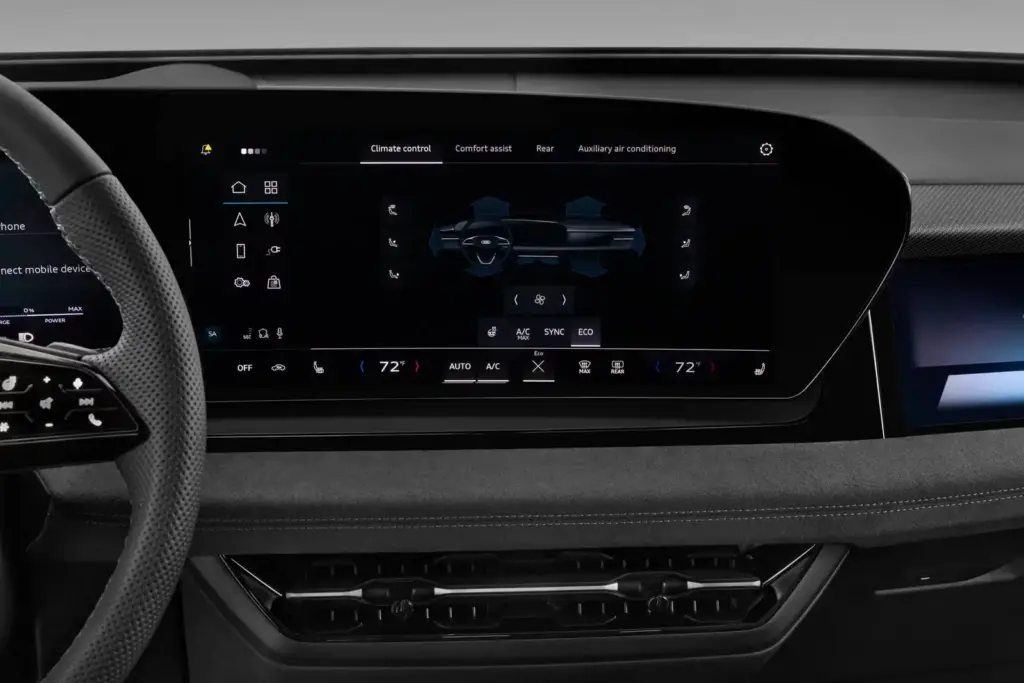
Used Market & Resale Value Considerations
Current Used Inventory and Pricing
Very limited used inventory exists given the model’s recent market introduction[5]. Most available units represent dealer demonstrators or customer special orders declined at delivery. Used Premium Plus examples currently list between $85,750-$86,780 depending on mileage and geographic location—representing minimal depreciation from original MSRP[5].
Most available units show under 20 miles, indicating dealer stock rather than genuine used vehicles[5]. Expect more substantial used availability after 6-12 months as early adopters complete lease terms or transition to newer models. The used EV market demonstrates high volatility, with pricing fluctuating based on federal incentive policies and gas price trends.
For buyers considering used purchases, understanding how many miles are good for a used car helps evaluate EV-specific mileage considerations differently than combustion vehicles. Electric powertrains experience less wear, making higher-mileage EVs potentially better values than similar-mileage gas vehicles.
Depreciation Expectations
EVs typically depreciate 30-40% during the first three years—steeper than comparable gas vehicles[5]. Audi EVs historically depreciate faster than Tesla models due to brand perception differences and residual value uncertainty among traditional manufacturers’ electric offerings. However, the S6 e-tron may hold value better than previous Audi EVs given limited production volumes creating artificial scarcity.
Federal tax credits of $7,500 don’t apply to used purchases under three years old, eliminating a major incentive for nearly-new units[5]. This policy creates pricing dynamics favoring slightly older used EVs eligible for used EV tax credits over nearly-new units priced close to new MSRPs without incentive eligibility.
Limited inventory should temporarily support resale values above historical EV depreciation curves. As production ramps and more units enter the market, expect depreciation to accelerate toward typical luxury EV patterns. The S6 e-tron’s strong real-world range and fast charging capabilities should help preserve value relative to shorter-range competitors.
Certified Pre-Owned (CPO) Programs
Audi’s Certified Pre-Owned program extends warranty coverage by one year/unlimited miles from purchase date[5]. CPO certification adds $2,000-$3,000 to used vehicle pricing but provides comprehensive benefits including roadside assistance and trip interruption coverage. The 300-point inspection process examines mechanical, electrical, and cosmetic condition ensuring CPO units meet strict quality standards.
Battery health certification forms part of CPO inspection protocols for EV models. Technicians verify battery capacity meets minimum thresholds and inspect cooling systems for leaks or degradation. This additional scrutiny provides buyers confidence regarding expensive battery pack condition—a major consideration for used EV purchases.
CPO programs prove particularly valuable for complex vehicles like the S6 e-tron featuring advanced technology systems requiring dealer-level diagnostics. The extended warranty coverage protects against unexpected repair costs that could otherwise prove financially devastating for high-tech luxury vehicles.
Best Time to Buy Used
Wait 12-18 months for first lease returns to create meaningful used inventory availability[5]. Early 2026 should see the first wave of three-year lease turn-ins eligible for used EV tax credits, creating attractive value opportunities. End-of-year timing (December) historically yields dealer inventory clearance discounts as sales teams push to meet annual quotas.
Avoid early 2025 production units potentially carrying unresolved software bugs[5]. Later production builds incorporate refinements addressing early owner complaints, reducing likelihood of experiencing teething issues. Target 2026 model year improvements for potentially better overall value—manufacturers typically refine new platforms after initial model year feedback.
Monitoring federal incentive policies proves critical for timing used EV purchases. Political changes affecting tax credits, charging infrastructure funding, and EPA regulations can dramatically influence EV pricing and availability. Patient buyers willing to wait for optimal market conditions often save thousands compared to purchasing under time pressure.
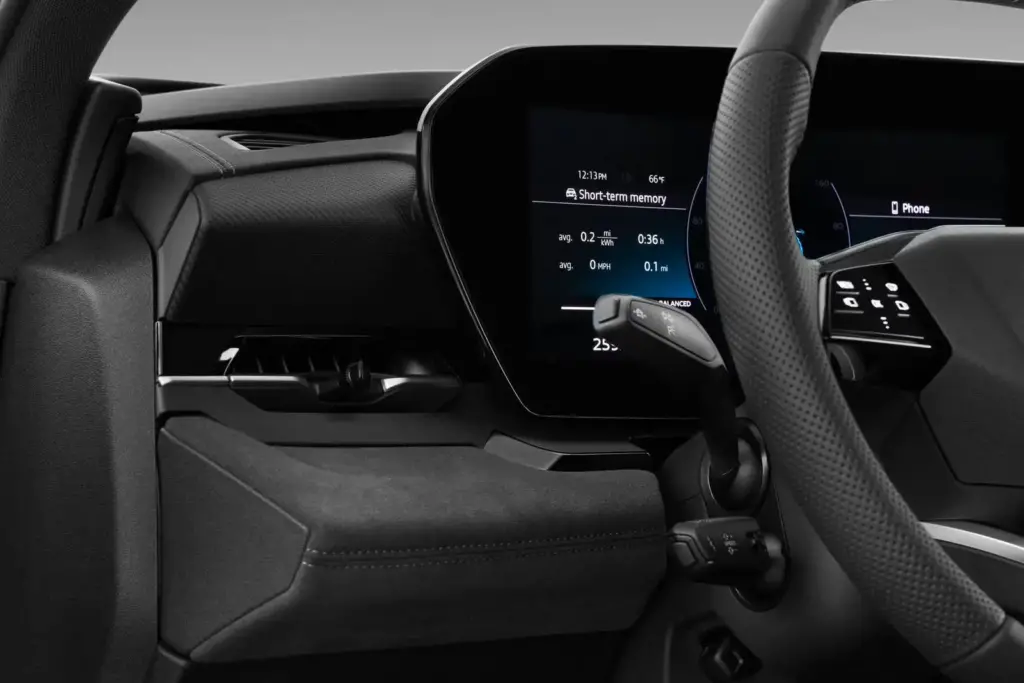
Buying Guide: Should You Buy the S6 e-tron?
Who Should Buy the 2025 Audi S6 e-tron
Luxury EV buyers prioritizing range and comfort over raw performance will find the S6 e-tron ideally suited[2]. The 324-mile EPA estimate enables long-distance travel without excessive charging stops, while the refined ride quality ensures arrival feeling refreshed rather than fatigued. Current Audi owners transitioning to electric vehicles benefit from familiar brand DNA and dealer relationships.
Buyers seeking traditional premium materials versus Tesla’s minimalism appreciate the S6’s conventional luxury approach[2]. Fine Nappa leather, physical climate controls, and recognizable interface layouts provide comfort to consumers wary of radical minimalist cabins. Long-distance commuters needing 300+ mile real-world range find the S6 e-tron among few luxury EVs meeting this requirement reliably.
Families wanting sportback cargo versatility benefit from the practical hatchback design. Weekend trips requiring sports equipment, luggage, or Home Depot purchases fit more easily than traditional sedan trunks allow. The combination of luxury, range, and practicality creates compelling value for active households.
Who Should Consider Alternatives
Driving enthusiasts seeking genuine “S-badge” engagement should consider the Porsche Taycan instead[4]. The S6 e-tron delivers competent performance but lacks emotional connection traditional S models provided. Budget-conscious buyers with $70,000 ceilings should explore the base A6 e-tron Quattro, offering similar range for $8,000-$10,000 less.
Tesla ecosystem loyalists prioritizing superior software and Supercharger network convenience won’t find equivalent sophistication in the S6’s infotainment[3]. The Model S delivers better software integration, more frequent over-the-air updates, and access to the most extensive charging infrastructure. Buyers prioritizing acceleration over range should consider the BMW i5 M60, which provides more engaging driving dynamics despite inferior efficiency[4].
Best Deals and Incentives
Federal tax credits provide $7,500 savings if income and MSRP limits are met[1]. Battery components and final assembly must satisfy US manufacturing requirements—verify current eligibility through IRS.gov before committing to purchase. State incentives vary dramatically, with California offering $2,000-$7,500 additional rebates depending on income levels and vehicle specifications.
Audi lease offers typically range $900-$1,200 monthly for Premium Plus trims with competitive money factors and residual values[1]. Leasing often makes financial sense for EVs given rapid technology evolution and uncertain resale values. Dealer incentives allow negotiation of $2,000-$5,000 off MSRP in competitive markets, particularly during end-of-quarter sales pushes.
The complimentary one-year Electrify America charging plan adds approximately $1,000-$1,500 value for buyers frequently road-tripping[8]. Calculate potential savings based on anticipated annual mileage and charging patterns to determine actual benefit value. Understanding the car buying timeline helps buyers negotiate effectively when securing these incentives.
Final Verdict: Is It Worth It?
Strengths include class-leading range, rapid 270 kW charging, premium materials throughout the cabin, and cargo versatility from the Sportback design[1]. The 800-volt architecture delivers practical charging speeds making road trips viable without excessive time penalties. Build quality meets German luxury standards with solid construction and attention to detail.
Weaknesses center on driving dynamics less engaging than S-badge promises, early software glitches requiring over-the-air fixes, and high starting prices relative to some competitors[2]. The interior quality, while good, doesn’t quite match expectations some buyers hold for $75,000+ vehicles. Advanced driver assistance systems prove overly sensitive, creating false alert frustrations.
- Bottom Line: The S6 e-tron represents an excellent luxury EV for practical buyers prioritizing comfort, range, and traditional premium appointments over maximum driving thrills[2]. Less engaging than performance purists desire, it nevertheless delivers competent performance adequate for most real-world scenarios. The vehicle suits buyers transitioning from traditional luxury sedans more than hardcore EV enthusiasts.
- Recommendation: Consider the A6 e-tron Quattro for approximately $10,000 less with similar 336-mile range[2]. Unless the additional 87 horsepower and sport-tuned suspension justify the premium, the base A6 delivers better overall value for practical luxury buyers. For those committed to S-badge prestige and performance, the S6 e-tron represents the most capable electric Audi sedan currently available.
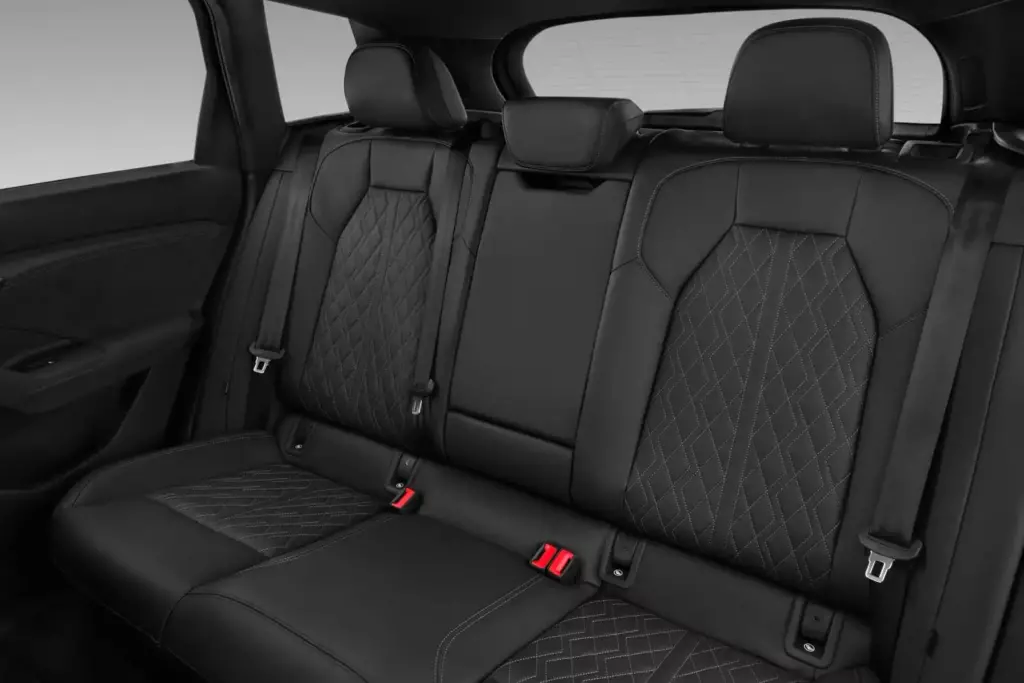
Key Takeaways
- The 2025 Audi S6 e-tron delivers 543 horsepower, 324-mile EPA range, and 270 kW charging starting at $75,000[1].
- Real-world range reaches 320-330 miles in city driving but drops to 270-290 miles at highway speeds above 70 mph[5].
- Premium Plus trim ($79,000-$80,200) offers best value with Bang & Olufsen audio and adaptive cruise assist[1].
- The S6 e-tron outperforms BMW i5 M60 in range by 71+ miles and charges significantly faster at 270 kW[4].
- Early software issues affect MMI systems and driver assistance, but over-the-air updates address problems progressively[5].
- Base A6 e-tron Quattro delivers similar range for $10,000 less, making it better value for most buyers[2].
- One year of complimentary Electrify America charging and pending Tesla Supercharger adapter availability enhance practicality[7][8].
Frequently Asked Questions
How long does it take to charge the 2025 Audi S6 e-tron?
With 270 kW DC fast charging, the S6 e-tron charges from 10-80% in approximately 21 minutes under ideal conditions at compatible high-power charging stations[1]. Using the 9.6 kW Level 2 home charger, a complete 0-100% charge requires 10-11 hours overnight[1]. Charging speed varies based on ambient temperature, battery state of charge, and charger compatibility. Cold weather and extremely hot conditions reduce charging speeds as the battery management system prioritizes longevity over speed.
What is the real-world range of the 2025 Audi S6 e-tron?
Real-world range varies significantly based on driving conditions and climate. City driving yields approximately 320-330 miles in moderate weather, while highway driving at 70-75 mph reduces range to 270-290 miles[5]. Cold weather decreases range by 15-20%, lowering winter capabilities to 260-275 miles. Highway speeds above 75 mph further reduce range due to exponentially increasing aerodynamic drag. Roof racks decrease range by approximately 40-50 miles due to increased wind resistance[5].
Is the S6 e-tron faster than the BMW i5 M60?
The S6 e-tron completes 0-60 mph in 3.7 seconds with 543 horsepower when launch control engages[1]. The BMW i5 M60 accelerates from 0-60 mph in 3.8 seconds despite producing 590 horsepower[4]. The S6 proves marginally quicker in straight-line acceleration, though the BMW delivers more engaging driving dynamics overall. Both vehicles provide supercar-level performance adequate for any real-world scenario, with differences measurable primarily on test tracks rather than public roads.
Does the 2025 Audi S6 e-tron qualify for tax credits?
The S6 e-tron qualifies for the $7,500 federal tax credit if income and MSRP limits are met[1]. Battery components and final assembly must satisfy US manufacturing requirements per IRS regulations. Check IRS.gov for current eligibility based on specific trim level and purchase date, as requirements evolve annually. Some higher-priced configurations may exceed MSRP caps, disqualifying them from federal incentives. State-level incentives vary dramatically by location, with California offering substantial additional rebates while some states provide no EV incentives.
Can I charge my S6 e-tron at Tesla Superchargers?
The S6 e-tron is not currently compatible with Tesla Superchargers without an adapter[7]. Audi announced NACS adapter availability beginning late 2025/early 2026, which will enable Supercharger access[7]. The vehicle remains fully compatible with CCS1 charging networks including Electrify America, EVgo, and ChargePoint. All 2025 S6 e-tron purchases include one year of complimentary DC fast charging through Electrify America’s nationwide network[8].
How does the S6 e-tron compare to the standard A6 e-tron?
The S6 e-tron produces 543 horsepower, accelerates 0-60 mph in 3.7 seconds, features sport suspension tuning, and S-specific styling elements starting at $75,000[1]. The A6 e-tron Quattro generates 456 horsepower, completes 0-60 mph in 4.5 seconds, offers comfort suspension, and standard styling starting around $67,000[2]. Range proves similar at 324 miles for the S6 versus 336 miles for the A6. Most reviewers recommend the A6 Quattro for superior value unless S-badge performance specifically appeals[2].
What are common problems with the 2025 Audi S6 e-tron?
Early production units experience MMI system occasional freezing or slow response requiring restarts[5]. Driver assistance systems generate false alerts for lane-keeping and emergency braking without genuine hazards present[5]. Piano black interior trim shows fingerprints immediately after cleaning, requiring frequent maintenance. Early production software bugs are being addressed through over-the-air updates as Audi accumulates real-world data[3]. Most issues prove minor and fixable through software refinements rather than hardware defects.
Is the S6 e-tron worth $10,000 more than the A6 e-tron Quattro?
The extra cost brings 87 additional horsepower, sportier handling dynamics, S-specific styling elements, and prestige badge recognition[2]. Most automotive reviewers recommend the A6 Quattro for better overall value given minimal real-world performance differences during normal driving[2]. The S6 justifies its premium only if S-badge exclusivity and sport tuning represent personal priorities worth the substantial upcharge. Test driving both variants helps determine whether subjective performance improvements justify the financial premium for individual buying preferences.
References
- Car and Driver. (2024). 2025 Audi S6 e-tron Review, Pricing, and Specs. https://www.caranddriver.com/audi/s6-e-tron
- MotorTrend. (2025). 2025 Audi A6 and S6 E-Tron First Drive: The End of EVs’ Awkward Phase. https://www.motortrend.com/reviews/2025-audi-a6-s6-e-tron-first-drive-review
- Road & Track. (2025). Tested: 2025 Audi S6 e-tron Is Too Laid Back. https://www.roadandtrack.com/reviews/a65931297/tested-2025-audi-s6-e-tron-is-too-laid-back/
- TrueCar. (2025). Audi S6 e-tron vs. BMW i5 Comparison. https://www.truecar.com/compare/audi-s6-e-tron-vs-bmw-i5/
- Reddit. (2025). Audi S6 Avant e-tron owner review. https://www.reddit.com/r/Audi/comments/1m698de/audi_s6_avant_etron_owner_review/
- Top Electric SUV. (2025). Audi S6 Avant e-tron wagon stays off-limits for U.S. https://topelectricsuv.com/first-look-review/audi-s6-avant-e-tron/
- Audi USA Media. (2025). Audi announces availability of NACS DC charging adapter. https://media.audiusa.com/releases/643
- Green Car Reports. (2025). Audi Q6 E-Tron and A6 E-Tron get one year free fast-charging at Electrify America. https://www.greencarreports.com/news/1146044_audi-q6-e-tron-and-a6-e-tron-get-one-year-free-fast-charging-at-electrify-america

I am a senior automotive analyst at Autvex. Expert vehicle evaluations, in-depth reviews, and objective analysis helping readers make informed automotive decisions with years of industry experience.

